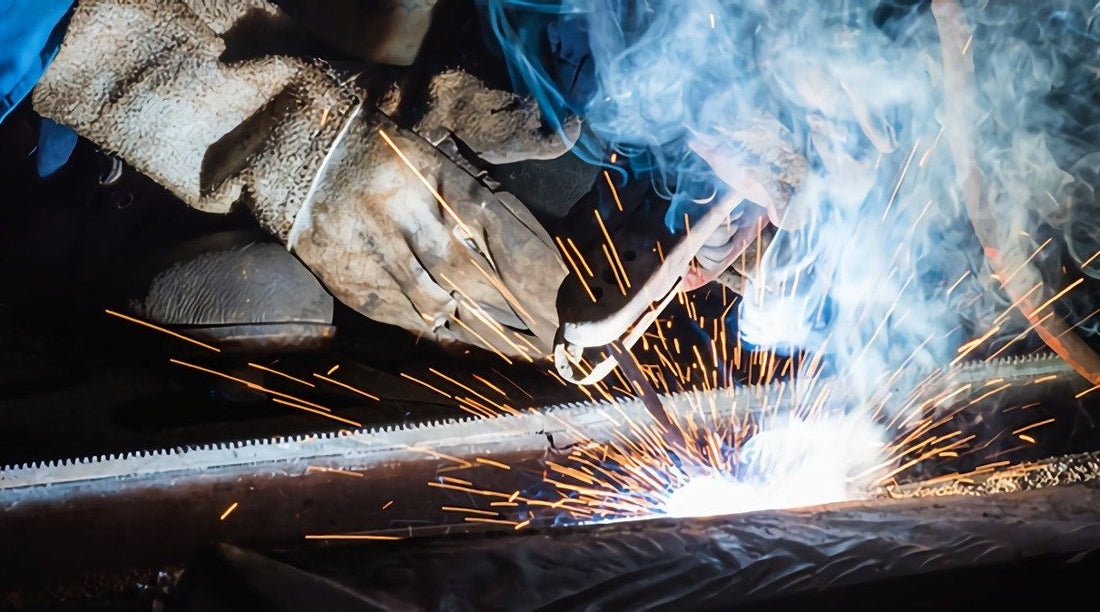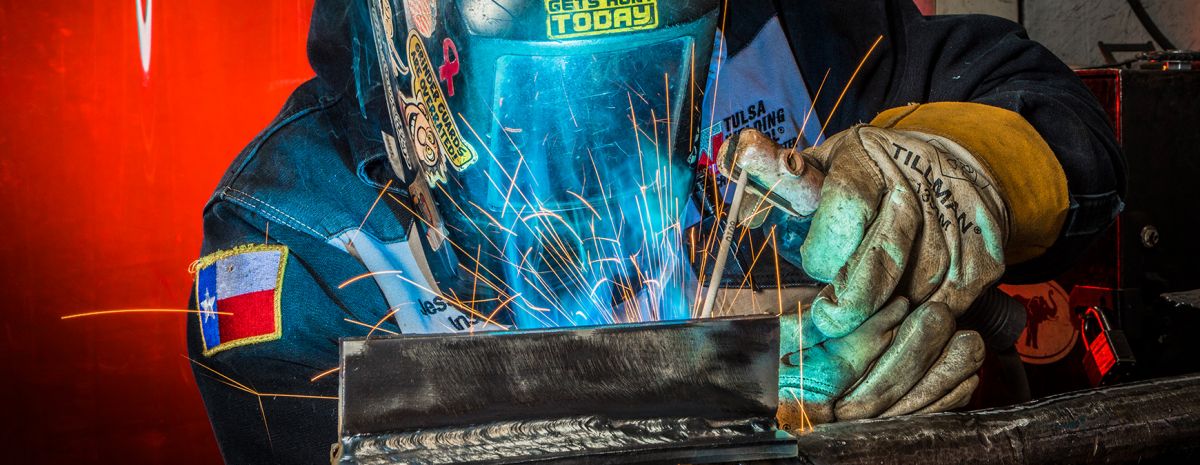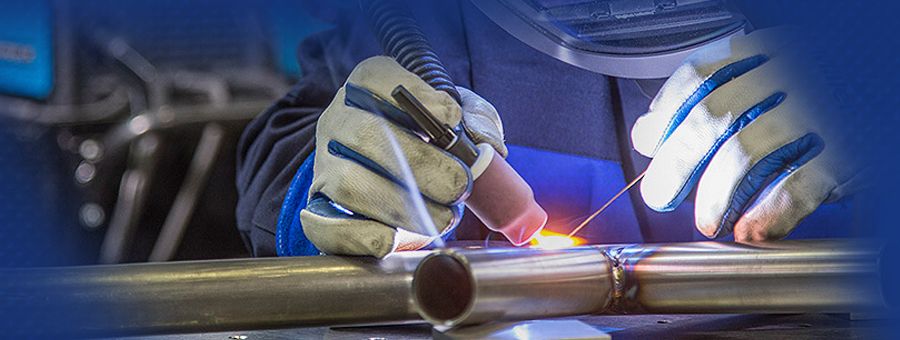Usual Welding Fixing Issues and Exactly How to Address Them Efficiently
Welding repair services commonly run into a variety of problems that can endanger the honesty of the final item. Common troubles consist of insufficient infiltration, porosity, and imbalance, to name a few. Each issue offers one-of-a-kind obstacles that call for specific approaches for resolution. Understanding these concerns is essential for welders intending to improve their skills and end results. This conversation will certainly check out these usual welding repair issues and efficient methods to resolve them.
Poor Infiltration
Inadequate infiltration happens when the weld metal fails to totally fuse with the base product, resulting in weak joints and potential structural failings. This concern usually originates from insufficient warm input, inaccurate electrode angle, or inappropriate welding speed. Welders might encounter inadequate infiltration as a result of a miscalculation of the needed specifications for a particular material thickness or kind. Furthermore, contamination on the base product's surface can prevent effective bonding, worsening the issue. To deal with poor infiltration, welders need to ensure proper settings on their tools and preserve a clean job surface. Regular assessment of welds is advised to identify any kind of deficiencies early, enabling timely modifications and the prevention of compromised structural stability in welded assemblies.
Porosity
Porosity is an usual issue in bonded joints that materializes as tiny gas bubbles trapped within the weld steel. This defect can compromise the integrity of the weld, leading to reduced toughness and possible failing under anxiety. Montana Mobile Welding and Repair. Porosity commonly arises from contamination, wetness, or improper welding methods, which allow gases to leave into the molten weld pool. To deal with porosity, welders need to guarantee appropriate surface preparation, preserve a clean working setting, and utilize ideal welding criteria. In addition, selecting the appropriate filler product and protecting gas can alleviate gas entrapment. Routine inspection and screening of welds can help recognize porosity early, guaranteeing timely corrective activities are taken, thus maintaining the high quality and reliability of the welded framework
Misalignment
Imbalance in welding can emerge from different variables, consisting of improper configuration and thermal development. Understanding the root triggers is important for reliable resolution. Several modification strategies are readily available to realign elements and ensure architectural honesty.
Reasons for Imbalance
Welding misalignment often originates from a selection of underlying issues that can endanger architectural stability. One main reason is inappropriate fit-up of components prior to welding, which can bring about voids and uneven surface areas. Variations in thermal growth during the welding procedure can also result in distortion, especially if the materials being joined have different coefficients of growth. Additionally, poor fixturing and clamping might stop working to hold components safely in area, causing movement during welding. Poorly maintained tools, consisting of welding devices and tools, might present inconsistencies in the weld grain, more adding to imbalance. Driver error, stemming from not enough training or experience, can also play a considerable role in developing misaligned welds.

Adjustment Strategies Available
Attending to imbalance properly needs a mix of corrective strategies customized to the particular issues available. One usual approach is making use of jigs or components to hold parts in the appropriate position throughout welding, making certain regular placement. Furthermore, preheating the products can assist minimize distortion and boost fit-up. For substantial imbalance, mechanical adjustment methods, such as utilizing hydraulic jacks or clamps, can be employed to fix the placement prior to welding. Post-weld warmth therapy may also be essential to relieve tensions brought on by imbalance. Mindful inspection and modification during the configuration phase can protect against imbalance issues from ending up being considerable problems, advertising a smoother welding process and enhancing general structural honesty.
Distortion
Distortion is a common difficulty in welding that can emerge from different variables, including irregular heating & cooling. Recognizing the sources of distortion is necessary for carrying out reliable avoidance strategies. Addressing this problem not only enhances structural integrity but likewise enhances the overall top quality of the weld.
Causes of Distortion
When based on the extreme heat of welding, materials frequently go through adjustments that can lead to distortion. This sensation mainly arises from thermal development and tightening throughout the welding process. As the weld area heats up, the material broadens; upon air conditioning, it contracts, which can produce internal tensions. In enhancement, irregular home heating across a workpiece can intensify these stress and anxieties, leading to bending or bending. The sort of material also plays a substantial duty; metals with varying thermal conductivity and coefficients of development might react in different ways, leading to unpredictable distortions. Additionally, bad joint style and insufficient fixturing can add to imbalance throughout welding, enhancing the chance of distortion. Comprehending these causes is vital for effective welding repair service and avoidance methods.
Avoidance Techniques
Reliable avoidance methods for distortion during welding emphasis on controlling heat input and making sure correct joint design. Maintaining a consistent warmth input helps to reduce thermal development and tightening, which can bring about distortion. Making use of methods such as preheating the work surface can additionally decrease the temperature slope, promoting consistent heating. Furthermore, choosing proper joint styles, such as T-joints or lap joints, can enhance stability and reduce stress focus. Applying correct fixturing to protect the workpieces in position better aids in maintaining placement during the welding procedure. Staggered welding series can disperse warmth more equally, avoiding local distortion. By applying these techniques, welders can significantly lower the chance of distortion and boost the overall welding iron quality of their welds.
Breaking
Breaking is a typical concern encountered in welding repairs, commonly resulting from various factors such as inappropriate cooling prices, product choice, or insufficient joint prep work. The event of splits can substantially jeopardize the honesty of the weld, resulting in potential failures throughout procedure. To address this issue, welders need to first evaluate the origin, guaranteeing that products work and suitably picked for the particular application. In addition, regulating the air conditioning price throughout the welding procedure is necessary; quick cooling can cause anxiety and bring about cracking. Correct joint layout and prep work additionally add to lessening the threat. Applying these strategies can improve weld quality and longevity, ultimately reducing the chance of cracking in finished weldments.

Insufficient Fusion
A considerable concern in welding repair work click this is incomplete blend, which takes place when the weld metal does not effectively bond with the base material or previous weld passes - Montana Mobile Welding and Repair. This issue can lead to weaknesses in the joint, potentially endangering the honesty of the welded framework. Aspects adding to incomplete blend include insufficient warmth input, incorrect welding strategy, and contamination of the surfaces being signed up with. To resolve this problem efficiently, welders must guarantee correct pre-weld cleansing and surface prep work, as well as adjust their welding parameters to achieve ample infiltration and combination. Routine inspection during the welding procedure can likewise help identify incomplete combination early, permitting for prompt restorative measures to enhance the overall quality of the weld
Overheating
While welding repairs can boost architectural stability, overheating presents a considerable difficulty that can bring about material deterioration. Excessive warmth during welding can modify the mechanical homes of metals, leading to minimized toughness, enhanced brittleness, and warping. This phenomenon is particularly crucial in high-stress applications where architectural dependability is extremely important. Determining overheating can involve visual evaluations for staining or distortion, as well as keeping an eye on temperature level throughout the welding procedure. To minimize the threats associated with getting too hot, welders ought to use ideal methods, such as regulating warm input, changing travel speed, and making use of suitable filler products. Furthermore, executing pre- and post-weld warmth treatments can assist restore material residential properties and enhance the total high quality of the repair service, ensuring lasting efficiency and safety.
Often Asked Questions
What Are the Typical Indications of a Welding Flaw?

Exactly How Can I Examine My Welds for Top quality?
To examine welds for quality, one can use aesthetic evaluations, ultrasonic screening, and radiographic methods. Each strategy guarantees structural integrity, determines flaws, and validates adherence to specified standards, ultimately enhancing the dependability of the bonded joints.
What Safety Safety Measures Should I Take While Welding?
When welding, one need to focus on safety and security by using appropriate personal protective tools, ensuring proper ventilation, protecting flammable materials away, maintaining a tidy office, and knowing surroundings to avoid accidents and injuries.
Can I Fix a Weld Without Renovating the Entire Joint?
Repairing a weld without redesigning the entire joint is possible, depending upon the damage (Belgrade). Methods such as grinding, adding filler material, or utilizing a welding process can properly deal with certain imperfections while preserving the surrounding structure
What Tools Are Vital for Reliable Welding Repair Works?
Essential tools for efficient welding fixings include a welding machine, wire brush, grinder, safety gear, clamps, and filler materials. Each device plays a crucial role in ensuring high quality and safety and security throughout the repair work procedure. Porosity typically emerges from contamination, wetness, or inappropriate welding strategies, which allow gases to run away right into the liquified weld swimming pool. Improperly conserved equipment, consisting of welding makers and devices, might present incongruities in the weld grain, further adding to misalignment. When subjected to the intense warm of welding, materials typically undertake modifications that can lead to distortion. Cracking is a common issue encountered in welding repair work, often resulting from different elements such as incorrect air conditioning rates, material selection, or poor joint prep work. A considerable problem in welding repairs is insufficient fusion, which takes place when the weld steel does not sufficiently bond with the base product or previous weld passes.